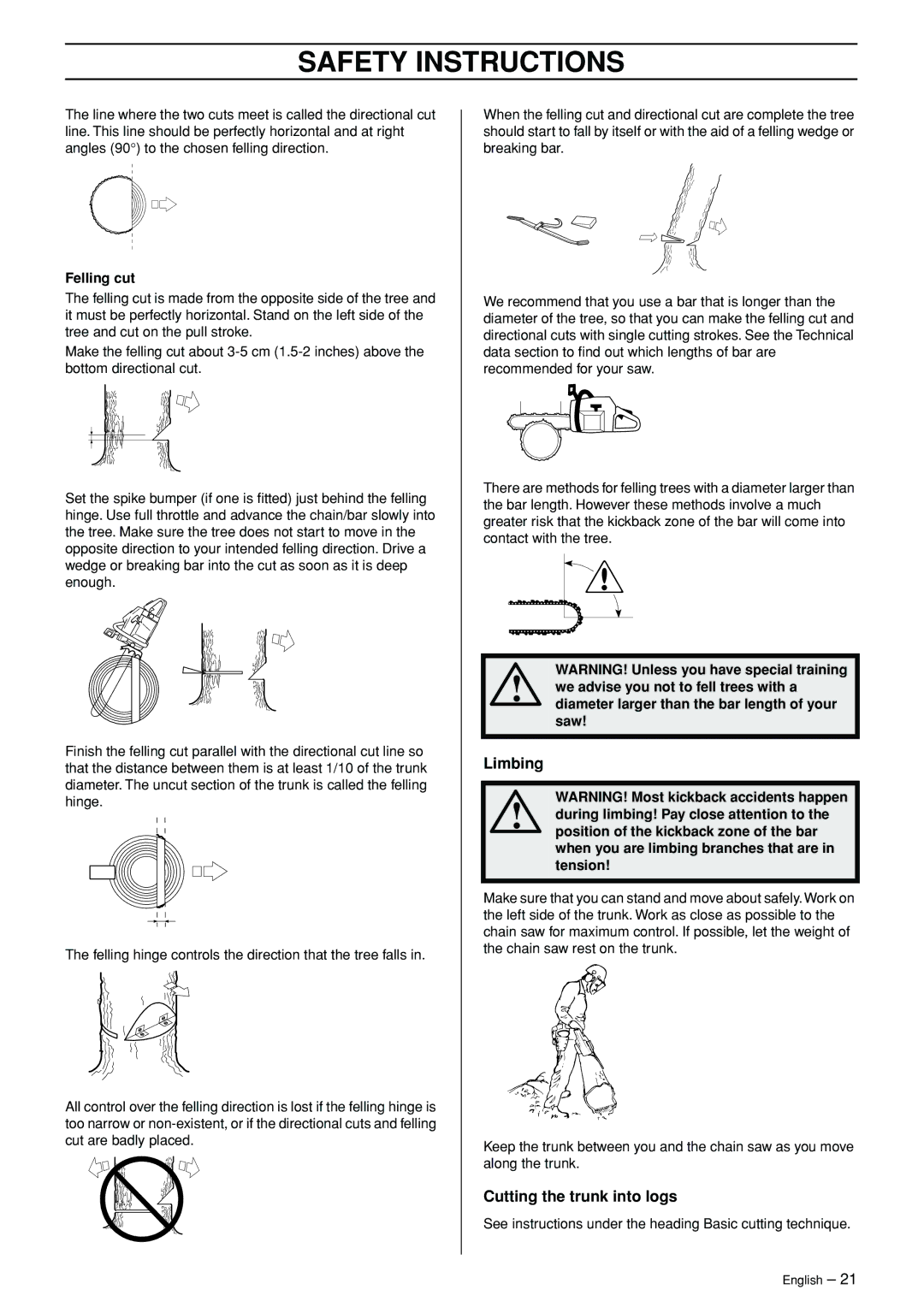
SAFETY INSTRUCTIONS
The line where the two cuts meet is called the directional cut line. This line should be perfectly horizontal and at right angles (90°) to the chosen felling direction.
Felling cut
The felling cut is made from the opposite side of the tree and it must be perfectly horizontal. Stand on the left side of the tree and cut on the pull stroke.
Make the felling cut about
Set the spike bumper (if one is fitted) just behind the felling hinge. Use full throttle and advance the chain/bar slowly into the tree. Make sure the tree does not start to move in the opposite direction to your intended felling direction. Drive a wedge or breaking bar into the cut as soon as it is deep enough.
Finish the felling cut parallel with the directional cut line so that the distance between them is at least 1/10 of the trunk diameter. The uncut section of the trunk is called the felling hinge.
The felling hinge controls the direction that the tree falls in.
All control over the felling direction is lost if the felling hinge is too narrow or
When the felling cut and directional cut are complete the tree should start to fall by itself or with the aid of a felling wedge or breaking bar.
We recommend that you use a bar that is longer than the diameter of the tree, so that you can make the felling cut and directional cuts with single cutting strokes. See the Technical data section to find out which lengths of bar are recommended for your saw.
There are methods for felling trees with a diameter larger than the bar length. However these methods involve a much greater risk that the kickback zone of the bar will come into contact with the tree.
WARNING! Unless you have special training
!we advise you not to fell trees with a diameter larger than the bar length of your saw!
Limbing
WARNING! Most kickback accidents happen
!during limbing! Pay close attention to the position of the kickback zone of the bar when you are limbing branches that are in tension!
Make sure that you can stand and move about safely. Work on the left side of the trunk. Work as close as possible to the chain saw for maximum control. If possible, let the weight of the chain saw rest on the trunk.
Keep the trunk between you and the chain saw as you move along the trunk.
Cutting the trunk into logs
See instructions under the heading Basic cutting technique.
English – 21
